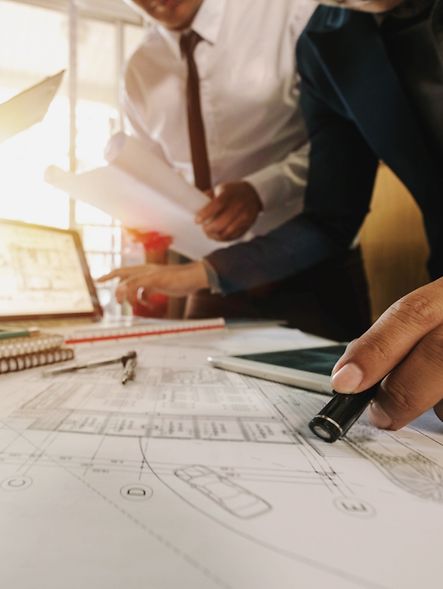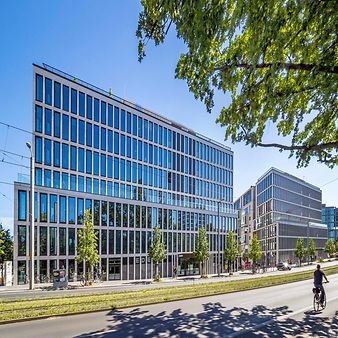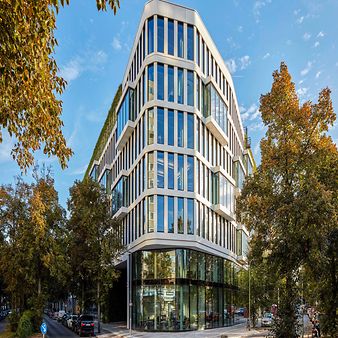
The European Green Deal requires climate neutrality by 2050 in Europe. In Germany, this target should be reached by 2045: a huge challenge in particular for the building sector, which is responsible for 38% of global CO₂ emissions. This will turn CO₂ into the new currency and an optimum carbon footprint will be the key to meeting tender requirements in full and ensuring investments that increase in value.
The solutions offered by Schüco Carbon Control that cover every building phase mean that architects and planners receive customised tools that can help them minimise carbon emissions from the building envelope right from the first draft for the entire lifecycle of the building and maximise profitability for contractors and investors. This means good plans can be turned into a climate-neutral reality.
Building-specific CO₂ reduction in all phases of construction: Schüco Carbon Control

With Design to Decarb from the initial design to the completed, decarbonised building envelope
The course is set for the subsequent carbon footprint of a building right from the design and planning phase. For planning and architectural practices, it is becoming ever more challenging to navigate the statutory requirements and meet the demands of your building contractors.
With ‘Design to Decarb’, our combined package of CO₂ -reducing products and services, the course can be set for the ideal CO₂ outcome for a building from the planning phase onwards – both for new builds and for renovation projects.
FAQ
What is an EPD?
What is an EPD?
The abbreviation EPD stands for ‘Environmental Product Declaration’. The EPD is a document itemising, in data form, the environmentally relevant properties of a specific material that is to be used in construction. Ideally, the entire lifecycle of the material will be taken into account here. Using this data, which is based on the GWP value of the material and the structure, an ecological assessment of the building can be carried out and the building certified.
What is the GWP value?
What is the GWP value?
The GWP value quantifies the ‘Global Warming Potential’ of a building – the CO₂ emissions from Embodied Carbon and Operational Carbon – across its entire service life. The GWP value is shown as the CO₂e, or the CO₂-equivalent.
Why is it so important to monitor CO₂?
Why is it so important to monitor CO₂?
The European Green Deal seeks to reduce greenhouse gas emissions by 55 % by 2030 and achieve climate neutrality by 2050. The EU requirement for CO₂ reduction applies from 2027 for new builds with over 2000 m² of usable space and from 2030 to all new builds.
What is Carbon Control?
What is Carbon Control?
Carbon Control from Schüco makes the decarbonisation of the building envelope manageable. Using the modular building-block principle, it enables building-specific CO₂ reduction across all phases of construction – planning, construction, operation and recycling.










